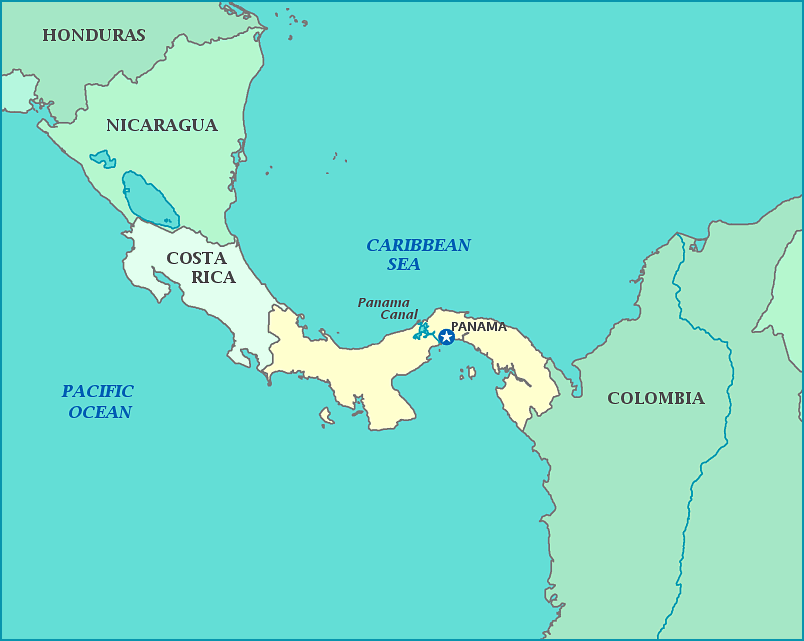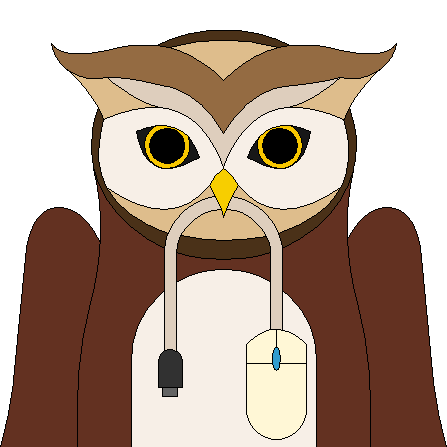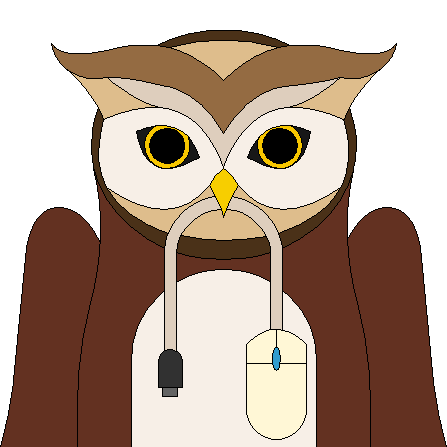
Print this map of Panama US States and Capitals Map Quiz
Free Maps, Map Puzzles and Educational Software: Owl and Mouse Educational Software
Panama
The Isthmus of Panama was formed over 3 million years ago. Once connected, flora and fauna spread between both South and North America; Panama is considered to be the most biodiverse country in Central America.
The land was inhabited by the Chichan, Chocoan, and Cueva when it was discovered by Europeans in 1501. Later, in 1513, Balboa proved the land could be used to reach the Pacific by trekking from coast to coast. Spain established a colony and ruled the land with lax control from 1531 to 1821, doing little when ports were constantly attacked by pirates. Like most of Central America, Panama broke away from Spain along with Mexico in 1821.
Panama joined Nueva Granada, Ecuador, and Venezuela as the Republic of Gran Colombia at first. While the Republic dissolved a few years later, Panama remained part of, or at least connected to the Republic of Colombia, with the exception of 1830 and 1840 due to turmoil in both of the countries, respectively. Panama finally broke away over building the Panama Canal in 1903.
Work began on the Canal in 1882 by a French company. By 1889, the company went bankrupt due to engineering problems, landslides, mud, and rampant disease. In the same year, the US became interested in creating a canal connecting the Pacific and Atlantic and founded the Isthmian Canal Commission. At first, the Commission recommended the Canal be built through Nicaragua, but turned their sights to Panama when new advances in naval technology came about in 1899. Theodore Roosevelt, president of the United States at the time, offered to fund the entire project, but was met with refusal by the Gran Colombia government. While the government claimed to be offended at such a low amount of money proposed, the people of Panama claimed offense at the government's decision, ultimately leading to revolution. After three failed attempts to secede, Roosevelt himself funded what became the Thousand Day War from 1899 to 1902 that separated Panama from Colombia for the final time in 1903 as the Republic of Panama.
The new government of Panama accepted Roosevelt's proposal and work on the canal began. First, the Panama railroad was updated and repaired, in order to move supplies and earth. Second, the US brought in workers, mainly European immigrants for labor and Americans for engineering and industry. At first, drunkenness and violence from American workers was a severe problem for both countries and many workers had to be sent home. The problem lay in the lack of recreational facilities other than saloons; so the US built a fully furnished YMCA with places for exercise, reading, billiards, photography, and a soda fountain. Even a baseball diamonds were constructed for workers and Panamanians. In addition to all these recreational facilities, two artificial lakes were created in the construction of the canal. Finally, in 1914, the first ship made its way through the Panama Canal without aid and the Canal officially opened just in time for WWI to cancel celebrations. The US took control over the Canal for military maintenance and protection until 1979, when control was returned to Panama. Ever since its construction, the Panama Canal has been considered one of the greatest accomplishments of modern engineering.
Area: 74,420 square kilometers
Population: 3,657,024 (2015 estimate)


